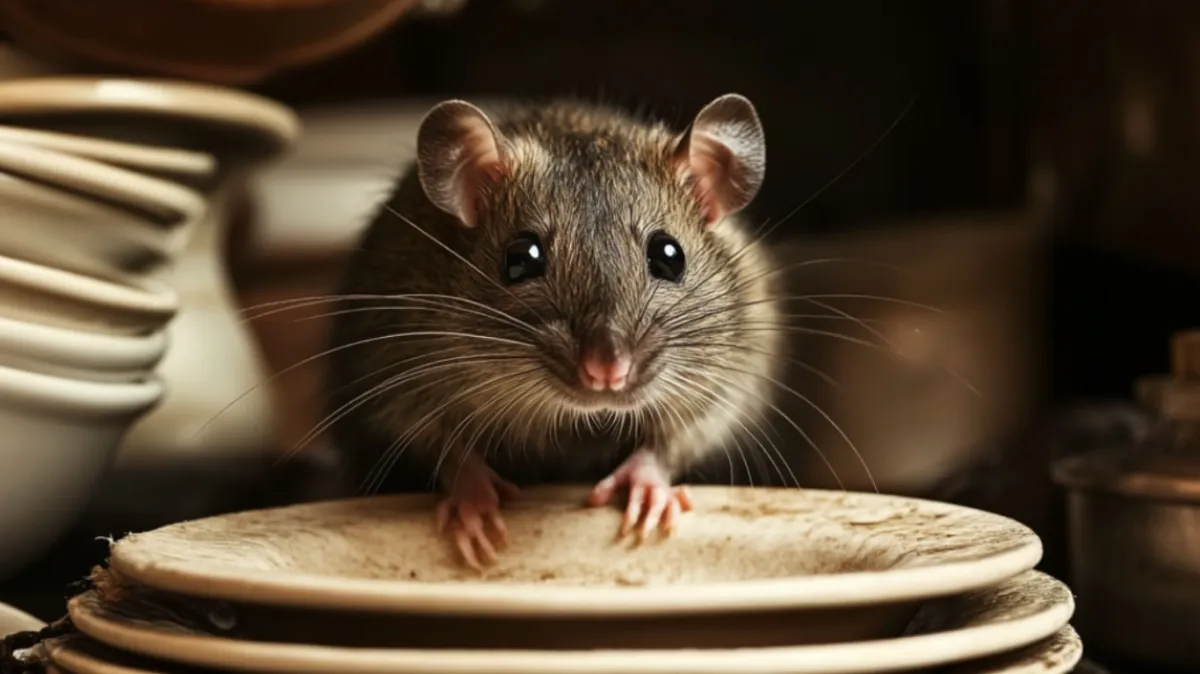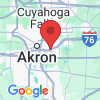
The Akron Pest Journal
Pierce Pest Control Akron Journal

Rodent Control in Akron: Stopping Spring Infestations Early
Why Spring Brings More Rodent Activity
Spring is a critical time for rodent activity, as warmer temperatures signal the start of breeding season for both mice and rats. As food sources become more available and shelter needs change, rodents become bolder and more active, increasing their risk of entering homes, garages, and businesses.
Taking early action in spring can prevent a small rodent problem from escalating into a full-blown infestation. Understanding the key reasons behind increased rodent activity can help homeowners stay ahead of the issue.
Key Reasons Rodents Are More Active in Spring
1: Increased Breeding Cycles: Rapid Population Growth
Spring marks the peak breeding season for mice and rats, allowing populations to multiply rapidly.
Mice reproduce at an alarming rate:
A single female mouse can have 5–10 litters per year.
Each litter can contain 4–12 pups.
Mice reach sexual maturity in 4–6 weeks, meaning new generations begin breeding almost immediately.Rats also reproduce quickly, though at a slightly slower rate than mice:
Each female rat can have 5–6 litters per year.
Litters typically contain 7–12 pups.Why this matters: A small rodent sighting today could mean dozens of rodents in just a few weeks if left unchecked.
2: More Foraging Behavior: Rodents Are Searching for Food
As temperatures rise, rodents become more active in their search for food sources.
Rodents target kitchens, pantries, and trash areas, contaminating food and leaving behind droppings.
Common household attractants include:
✔️ Open food containers (grains, cereals, pet food).
✔️ Crumbs and grease spills in kitchen areas.
✔️ Unsecured trash bins and compost piles.Why this matters: Increased rodent foraging leads to higher chances of home infestations, particularly in areas with easy access to food.
3: Seeking Shelter & Nesting Sites: Rodents Move Indoors
As spring progresses, rodents seek out warm, safe locations to nest and raise their young.
Common nesting sites inside homes include:
Attics & insulation – Mice and rats burrow into insulation for warmth.
Basements & crawlspaces – Dark, undisturbed areas make ideal nesting spots.
Garages & sheds – These areas offer shelter and often contain food sources like pet food or birdseed.
Inside walls & ceilings – Rodents squeeze through small cracks to build nests inside homes.Why this matters: Nesting rodents stay hidden, making infestations harder to detect until the problem has grown significantly.
4: Increased Outdoor Movement: Rodents Are Expanding Their Range
As snow melts and ground thaws, rodents venture farther from their winter shelters in search of food and water.
Warmer weather makes it easier for rodents to move through yards and enter homes.
Common entry points into homes include:
Cracks in foundations and gaps around pipes.
Unsealed vents, chimneys, and attic openings.
Gaps in garage doors or under entry doors.Why this matters: Once rodents establish a presence in your yard, they’re much more likely to find their way inside your home.
How to Prevent Rodents from Entering Your Home
1. Seal Entry Points to Keep Rodents Out
Rodents can squeeze through tiny gaps as small as a dime (for mice) or a quarter (for rats). Conduct a thorough inspection of your home and seal off any possible entry points.
Check these areas carefully:
Gaps in doors and windows – Install weather stripping and door sweeps to block rodent access.
Foundation cracks and vents – Use steel wool or caulk to fill small openings.
Roofline openings and chimneys – Cover vents and chimneys with fine metal mesh to prevent rodent entry.
Utility pipe openings – Seal gaps around wires, cables, and plumbing pipes with durable materials.
2. Eliminate Food Sources & Reduce Attractants
Rodents thrive in areas with easy access to food and water. Reducing their available food sources will make your home less appealing.
In the Kitchen:
Store all food in sealed, rodent-proof containers (avoid plastic bags).
Clean up crumbs and spills immediately.
Take out trash regularly and use bins with tight-fitting lids.
Around the House:
Avoid leaving pet food or birdseed outside overnight.
Fix leaky faucets or standing water that could attract thirsty rodents.
Keep compost bins securely covered and stored away from the house.
3. Maintain Your Yard & Outdoor Areas
Rodents hide in overgrown areas, making yard maintenance an essential part of rodent prevention.
Yard Maintenance Tips:
Trim overgrown bushes and tall grass to remove rodent hiding spots.
Keep firewood stacked at least 12 inches off the ground and away from your home.
Remove clutter, debris, or piles of leaves where rodents could nest.
Garage & Storage Tips:
Declutter garages, sheds, and basements to reduce hiding places.
Store materials in sealed bins instead of cardboard boxes (which rodents can chew through).
Signs of a Rodent Infestation
If rodents have already made their way inside, it’s important to catch the problem early.
Warning signs to look for:
Droppings – Small, dark pellets found in kitchens, pantries, and along walls.
Gnaw Marks – Chewed food packaging, furniture, and wires.
Scratching Noises – Sounds coming from walls, ceilings, or attics, especially at night.
Grease Marks – Oily streaks along baseboards and walls from rodent fur.
Strange Pet Behavior – Dogs and cats becoming fixated on walls or furniture.
What to Do If You Already Have Rodents in Your Home
If you suspect a rodent infestation, follow these steps immediately:
1: Identify the problem – Look for droppings, chew marks, and nesting areas.
2: Remove easy food sources – Store food properly and clean up crumbs.
3: Set traps – Use snap traps or bait stations in high-activity areas.
4: Do not block exit points immediately – Trapped rodents may cause more damage trying to escape.
5: Call a professional rodent control service – Pierce Pest Control offers safe, effective rodent removal and long-term prevention solutions.
If you suspect a rodent problem or want to schedule a professional inspection, Pierce Pest Control is here to help! Contact us today for expert rodent control solutions.
Visit us online at [https://piercepestcontroloh.com/] to schedule your rodent prevention service!

Schedule a Pest Inspection
Ready to schedule a pest inspection? Contact us today.

